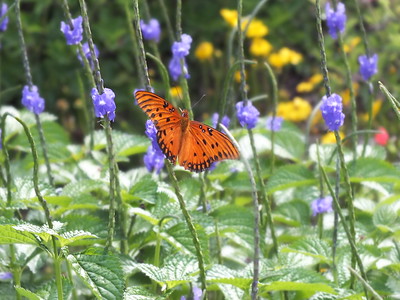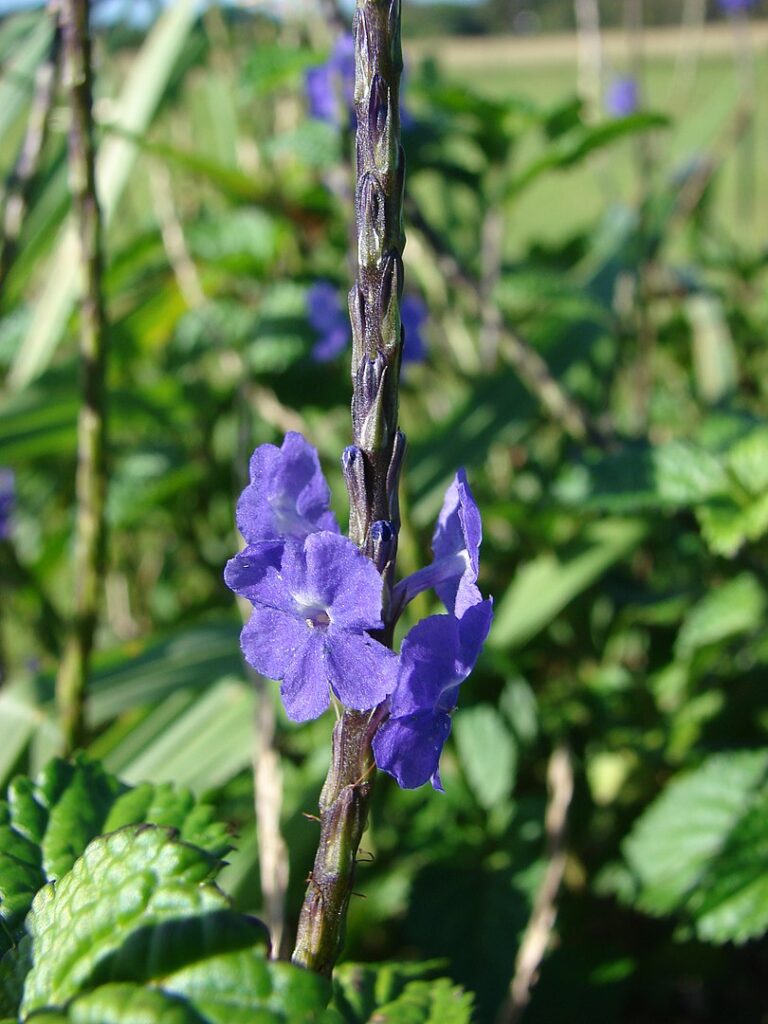
Blue Porterweed, Nettleleaf porterweed
Nettleleaf porterweed, or Stachytarpheta cayennensis, is a member of the verbena family that makes a striking and easy-care addition to a pollinator garden. This is not the native Florida Porterweed, but it attracts up to 98 different species of butterflies. It’s also a standby food for bees.
Benefits
- Attractive to bees and butterflies
- Tall bush with towering bracts of flowers adds garden drama
- Evergreen foliage
- Used medicinally in Latin America
- Easy to care for
- Self-seeds prolifically
- Tolerates poor soil and some drought
Description
This upright bushy shrub features a wood base and can grow up to six feet tall, making it an excellent filler plant for the cottage garden.
The small purple or blue flowers rise above the foliage on slender spikes, and nettle leaf Porterweed blooms throughout the warmer seasons.

Porterweed Care Tips
Because this plant is considered an invasive species in South Florida, care should be taken to keep it contained in this region.
In other regions, it is a perennial that is hardy up to 30°F. It can also be overwintered in containers or grown as an annual in temperate growing zones.
Water young plants regularly during their first year. Nettle leaf Porterweed is drought tolerant but will thrive with weekly watering. It also thrives in poor, sandy soil, but appreciates a spring feed once the weather warms up.
| Species Name: | Stachytarpheta cayennensis |
| Common name(s): | Nettleleaf porterweed, blue porterweed |
| Defining Characteristics: | Tall spikes of blue and purple flowers |
| Watering frequency: | Water regularly during the first growing season and hot/dry weather, this plant can be drought tolerant. |
| Lighting: | Full sun to partial shade |
| Soil type: | Loose, sandy soil |
| Growth rate: | Fast growing |
| Height: | 4 to 6 feet in the ground |
| Origin: | Central America and Caribbean |
| USDA Hardiness Zone: | 9-12 |
| Additional Notes: | Considered a Class II exotic invasive species in South Florida |
